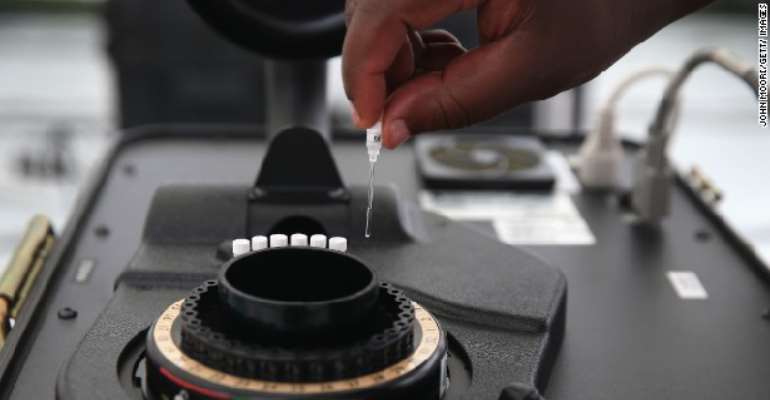Nigerian Vaccinologist Develops Immunogenic Experimental Ebola Vaccine Candidate

World-renowned vaccinologist Dr Simon Agwale, from Nigeria, Friday in Paris, France, presented his progress report on Ebola vaccine. Dr Agwale is among over 300 delegates drawn from forty-two countries to mark the International Conference on Targeting Ebola organised by the Pasteur Institute held from 28 – 29 May 2015.
A statement by Dr Yuri Nakamoto, on behalf of the Scientific Committee of the conference, said the agenda included 140 oral, short and posters communications, latest developments in the Ebola outbreak in Africa, latest clinical developments, innovations, vaccines and drugs to combat Ebola, and prevention of Ebola contamination and transmission, to be published by the committee.
Dr Agwale alongside Epie E, and Pushko P, of Innovative Biotech Ltd, Keffi, Nasarawa State, Nigeria; and Innovative Biotech USA Inc, Havre de Grace MD USA, in their presentation entitled, “Construction and Evaluation of a Highly Immunogenic EBOLA Influenza VLP Vaccine Candidate”, prepared and evaluated EBOV VLPs that included GP of EBOV Zaire strain in which VLPs were expressed using recombinant baculovirus in Sf9 cells.
An excerpt from the abstract reads that, “Expression was confirmed by SDS-PAGE and western blot using antigen-specific sera. VLPs were confirmed by electron microscopy. Purified EBOV VLPs were diluted with PBS or our proprietary adjuvant to a final protein concentration of 1 mg/ml. 6 BALB/c mice per group were inoculated subcutaneously with 25 or 50 mg of VLPs in PBS or adjuvant on days 0 and 28. A negative control group of BALB/c mice received PBS in place of VLPs. Serum samples were taken before primary and booster inoculations (days 0 and 28), as well as on day 57. Serum antibodies were determined by ELISA and western blotting using recombinant EBOV GP antigen. Electron microscopy revealed the presence of VLPs. Furthermore, the VLP was very immunogenic as measured by ELISA, and the primary immune responses were boosted after the second immunization. In addition, the immunogenicity was confirmed by western blot. Antibody titer was higher in groups of animals that received our proprietary adjuvant than animals that received PBS. This was also confirmed by western blot.”
They submitted that, “We have developed and evaluated an EBOV candidate vaccine that is highly immunogenic in mice. Given the immediate need for an Ebola vaccine and the efficiency, safety and adaptability of our VLP platform technology we are confident in producing a high yield, high quality product using the most cost effective methodologies available. Recombinant VLPs have inherent advantages in safety, which is especially important for patients with immune system disorders including AIDS. This vaccine approach can therefore be used for mass vaccination in Africa to prevent EBOV infections and future epidemics of this deadly disease.”
Dr Agwale said they were also using their platform technology to develop vaccines against HIV, malaria and other diseases that plaque Africa.
In 2014, several countries in West Africa experienced epidemic of EBOV and reported numerous cases of EBOV infections. Previous studies identified viral antigens that are potentially useful in vaccine development. The multidiscipline collaborative project aims at developing an effective EBOV multivalent vaccine against Ebola strains based on highly immunogenic virus-like particle (VLP).
